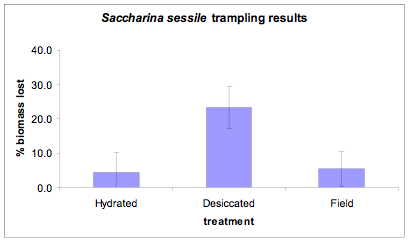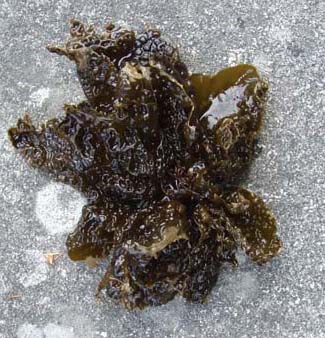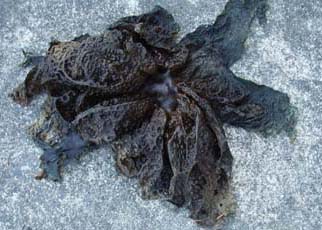Meegan Corcoran and I conducted a short research project testing how well seaweeds tolerate human trampling. Listed below are the highlights of our work with Saccharina sessile.
METHODS
- We collected samples of Saccharina sessile from the field at Deadman’s Bay on the west side of San Juan Island.
- We lay out 6 hydrated specimens and trampled them for 25 steps each on a concrete slab at Friday Harbor Labs.
- We desiccated 6 specimens for 6 h and then trampled them with 25 steps.
- We took a pre-trampling and post-trampling mass of each specimen and calculated the percent biomass lost for each plant.
- We also preformed field experiments at Deadman’s Bay in which we trampled 4 specimens for 25 steps and then collected the remaining thallus and the detached pieces and used these masses to calculate the percent mass lost.
RESULTS
- Desiccated specimens lost a significantly higher mean percent biomass than hydrated specimens (t-test, p < 0.001).
- There was no significant difference between the percent biomass lost in the hydrated lab and field treatments (t-test, p = 0.625)

DISCUSSION
- Saccharina sessile is found in the low intertidal and thus does withstand desiccation very well.
- In general, S. sessile had lower percent losses than other algal species (Fucus spp., Porphyra spp., Ulva spp.) as only small pieces became deteached instead of entire branches. This is probably due to the stipeless morphology of the sea cabbage.
- The bullate blades of the sea cabbage and its bushy overlapping morphology may also help it to retain water and prevent desiccation. We noticed that even after 6 h of desiccation in our lab trials there were still some retained water on our samples.
|





